Transporting hot food safely is a key concern for anyone in the food service industry, whether catering a wedding, running a meal delivery program, or managing off-site dining events. One of the most significant challenges during transport is maintaining food temperatures to avoid the “temperature danger zone.” Failing to keep food within a safe temperature range can lead to foodborne illnesses and declining quality.
To prevent these risks, it’s crucial to use reliable solutions like insulated food carriers and transport cabinets specifically designed to keep hot foods at safe serving temperatures for extended periods.
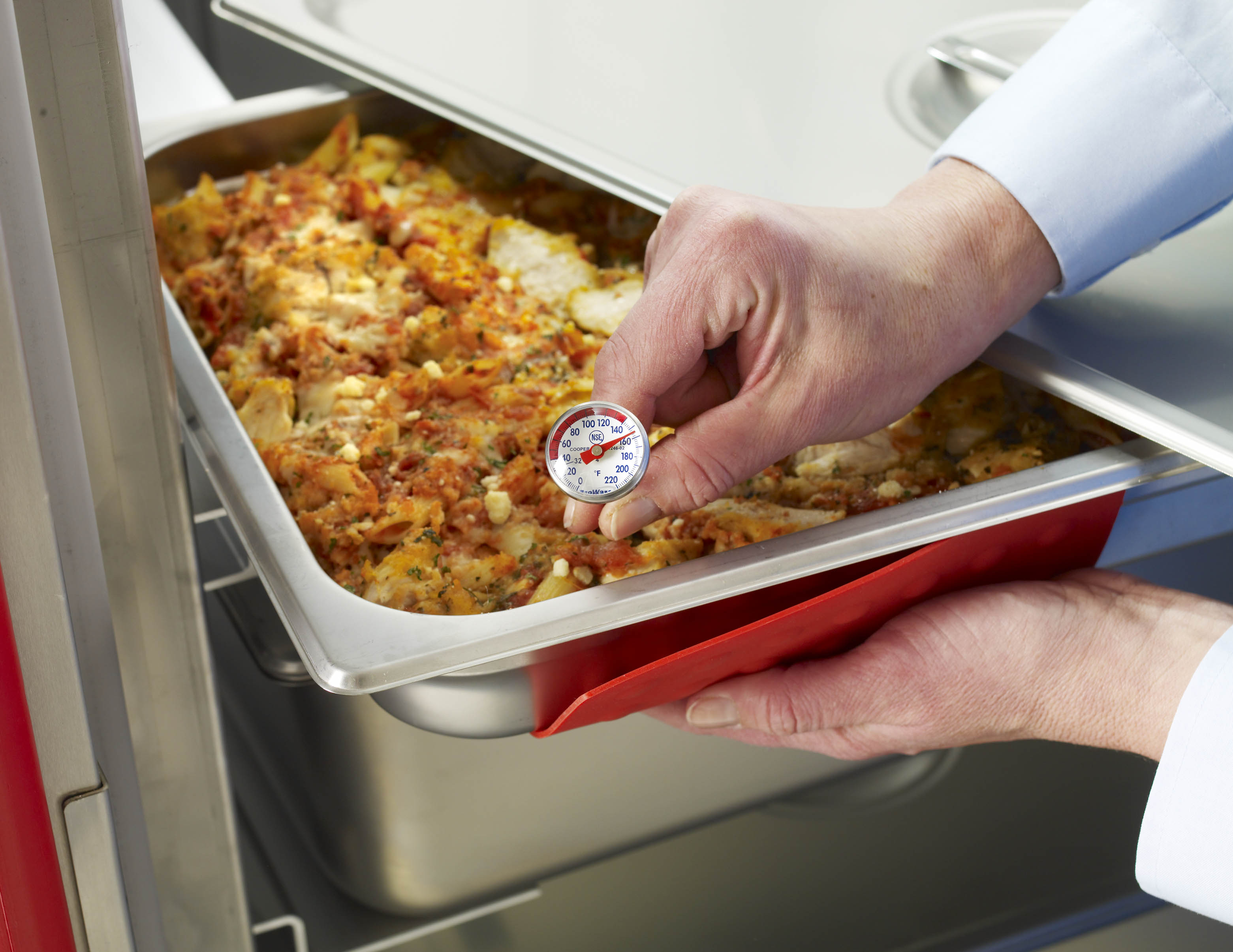
The Importance of Food Safety in Transport
Transporting food safely involves maintaining that temperature throughout the journey. The temperature danger zone is where bacteria thrive, multiplying rapidly and increasing the risk of foodborne illness.
To keep hot foods safe, they must remain at 140°F or higher. This can be particularly challenging during transport, where environmental factors and logistical constraints make consistent temperature control difficult.
When food is on the move, it is more vulnerable to temperature fluctuations. Even insulated equipment can lose heat during extended holding times, and external conditions like cold weather, direct sunlight, or poor ventilation in a delivery vehicle can exacerbate the problem. Additionally, frequent handling, such as loading and unloading containers, opening carriers, or delays in transit, can introduce further risks.
Essential Equipment for Safe Hot Food Transport
Insulated food carriers and transport cabinets are indispensable for keeping food hot and safe during transport. These tools are designed to address the specific challenges of maintaining temperature consistency and protecting food quality, even during extended periods of transit.
Insulated Food Carriers
Insulated food carriers are among the most effective and versatile solutions for transporting food. Built with thick insulation and airtight seals, they minimize heat loss and keep food at safe temperatures for hours. These carriers are ideal for catering services, restaurants offering delivery, or any scenario where hot food needs to be transported over short to medium distances.
When choosing an insulated carrier, it’s important to consider factors like weight, ease of cleaning, stackability, temperature retention, and mobility. For operations that require frequent handling, a lightweight option can reduce strain without sacrificing performance.
Our Top Pick:
Metro Mightylite
Metro Mightylite Insulated Food Carriers balances functionality and practicality, making them a great option for most food service operations. Its lightweight construction makes it easy to carry, even during busy events, while the thick insulation ensures consistent heat retention. Available in both front-load and top-load options, Mightylite food carriers are compatible with various food pan sizes and designed for easy stacking.
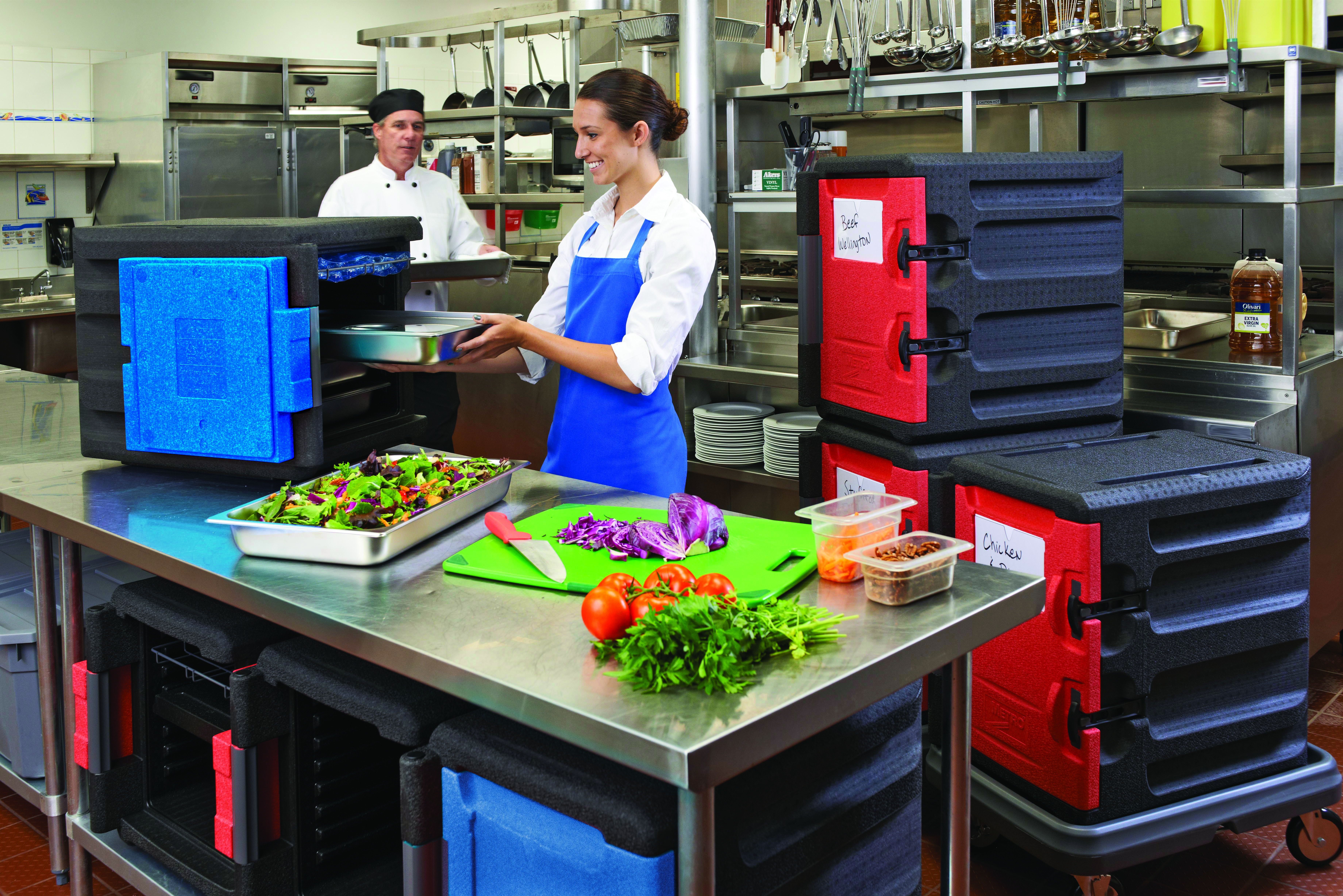
What to Consider in a Food Carrier:
To find the best insulated food carrier for your needs, consider your operation’s specific requirements. Whether you prioritize durability, portability, or versatility, the right insulated carrier can elevate your food transport process and help deliver a consistently great dining experience.
To find the best carrier to meet your needs, check out our Food Transport Buyer’s Guide.
Transport Cabinets
Heated Holding cabinets are the go-to solution for larger-scale operations or events where food needs to be held for extended periods. Unlike insulated food carriers, most transport holding cabinets are powered and equipped with advanced heating systems to maintain consistent internal temperatures.
These cabinets are particularly useful for banquet halls, hospitals, schools, or large-scale catering operations where bulk food needs to remain hot and ready to serve. Many models offer adjustable shelving and heavy-duty casters for easy mobility, ensuring that even heavy loads are manageable.
Metro’s heated transport cabinets are specifically built for over-the-road applications. They offer the same benefits as our holding cabinets but include additional features suited to mobile applications, including insulation and larger casters.
Our Top Picks:
C5 T-Series with Transport Armour
We built the C5 T-Series specifically for food transport, focusing on durability and efficiency. Made of rugged materials and insulated with foamed-in-place polyurethane, this cabinet ensures superior heat retention and structural rigidity. Even when unplugged and in transit, an optional mobile power system circulates air inside the cabinet to eliminate hot and cold spots,
Ideal for over-the-road applications, the C5 T-Series is built to withstand the rigors of daily use while maintaining energy efficiency. With features like larger casters and reinforced transport armor, this cabinet is perfect for demanding environments where reliability and mobility are essential.
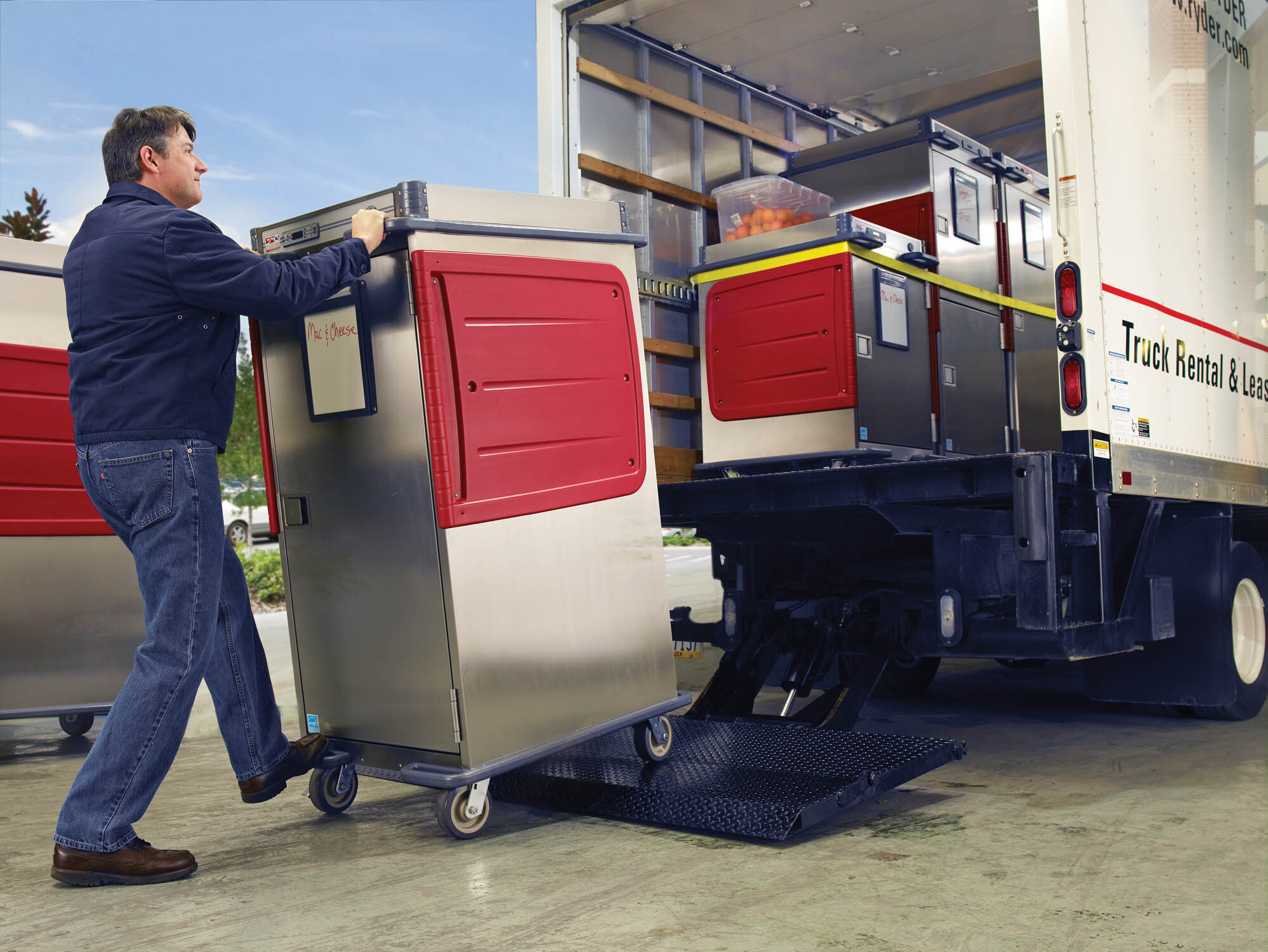
Metro HotBlox™
Metro HotBlox™ holding cabinets utilize hybrid convection-radiant heating technology to hold moist or crispy food, making it one of the most versatile cabinets on the market. Conveniently designed with a small footprint, HotBlox heated cabinets are easy to move within your facility or over the road.
Built for flexibility, HotBlox can accommodate multiple food types simultaneously, making it ideal for operations with varied menus. Also available in under-counter, countertop, and stackable configurations, our transport models include heavy-duty casters and a swing-up pull handle for easy transport.
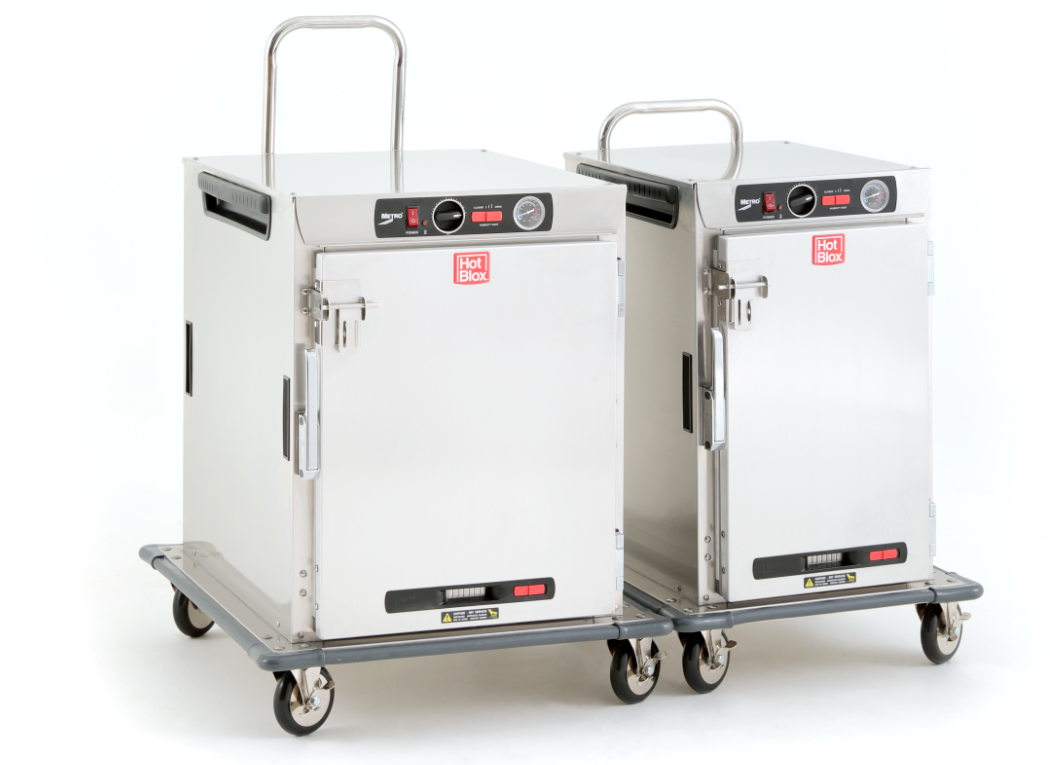
What to Consider in a Transport Cabinet:
When choosing a heated cabinet for transport, consider your operation’s needs and the cabinet’s travel requirements. Features like durable construction, reliable insulation, and advanced heating technology ensure food stays at safe temperatures throughout transport. Large, heavy-duty casters are essential for mobility, especially when moving heavy loads over uneven surfaces or long distances.
Want to learn more? Check out our cabinet selection guide.
Best Practices for Hot Food Transport
Both insulated food carriers and transport cabinets provide peace of mind, knowing that your food will arrive at its destination safely and at the right temperature. However, using the right equipment is only part of the equation.
To ensure your food stays hot in transport, follow these tips:
1. Preheat Your Equipment
Before loading hot food, preheat your insulated carriers or transport cabinets. This helps maintain consistent internal temperatures from the start, reducing the risk of heat loss as food is loaded and transported.
2. Load Food at the Proper Temperature
Ensure all food is heated to the required temperature before placing it in your carrier or cabinet. Neither equipment type is designed to cook or significantly raise food's temperature; they are meant to maintain it. Use a food thermometer to confirm that items are at or above 140°F before loading.
3. Use the Right Containers
Choose tightly sealed food pans or containers to retain heat, prevent spills, and minimize exposure to outside air. Ensure the containers are compatible with your carrier or cabinet to optimize space and maintain efficient heat distribution.
4. Minimize Empty Space
When transporting food, it is important to minimize the amount of empty space inside a cabinet or carrier and maximize food density. This will help maintain temperatures over time.
5. Minimize Opening During Transport
Avoid opening carriers or cabinets unnecessarily while in transit. Every time the door is opened, heat escapes, which can compromise the safety and quality of the food. Plan your deliveries and organize food strategically to minimize disruptions.
6. Maintain Proper Humidity Levels
For moist foods, ensure your equipment supports humidity control. For example, use transport cabinets with radiant heating elements or add water pans to maintain the desired moisture level. This is especially important for schools, hospitals, and catering businesses serving large volumes of food.
7. Secure Your Equipment During Transport
Secure carriers and cabinets in your delivery vehicle to prevent movement or tipping during transit. Unstable equipment can lead to spills, heat loss, or even food damage.
8. Monitor and Document Temperatures
Use a food thermometer to check temperatures at key points, including loading, mid-transport (if possible), and delivery. Documenting these temperatures may also help meet food safety compliance requirements for operations like schools and healthcare facilities.
9. Plan for Delivery Timing
Timing is critical for food safety. Transport food close to serving time to minimize holding times and reduce the risk of temperature loss. Communicate clearly with your delivery team or catering staff to ensure smooth transitions.
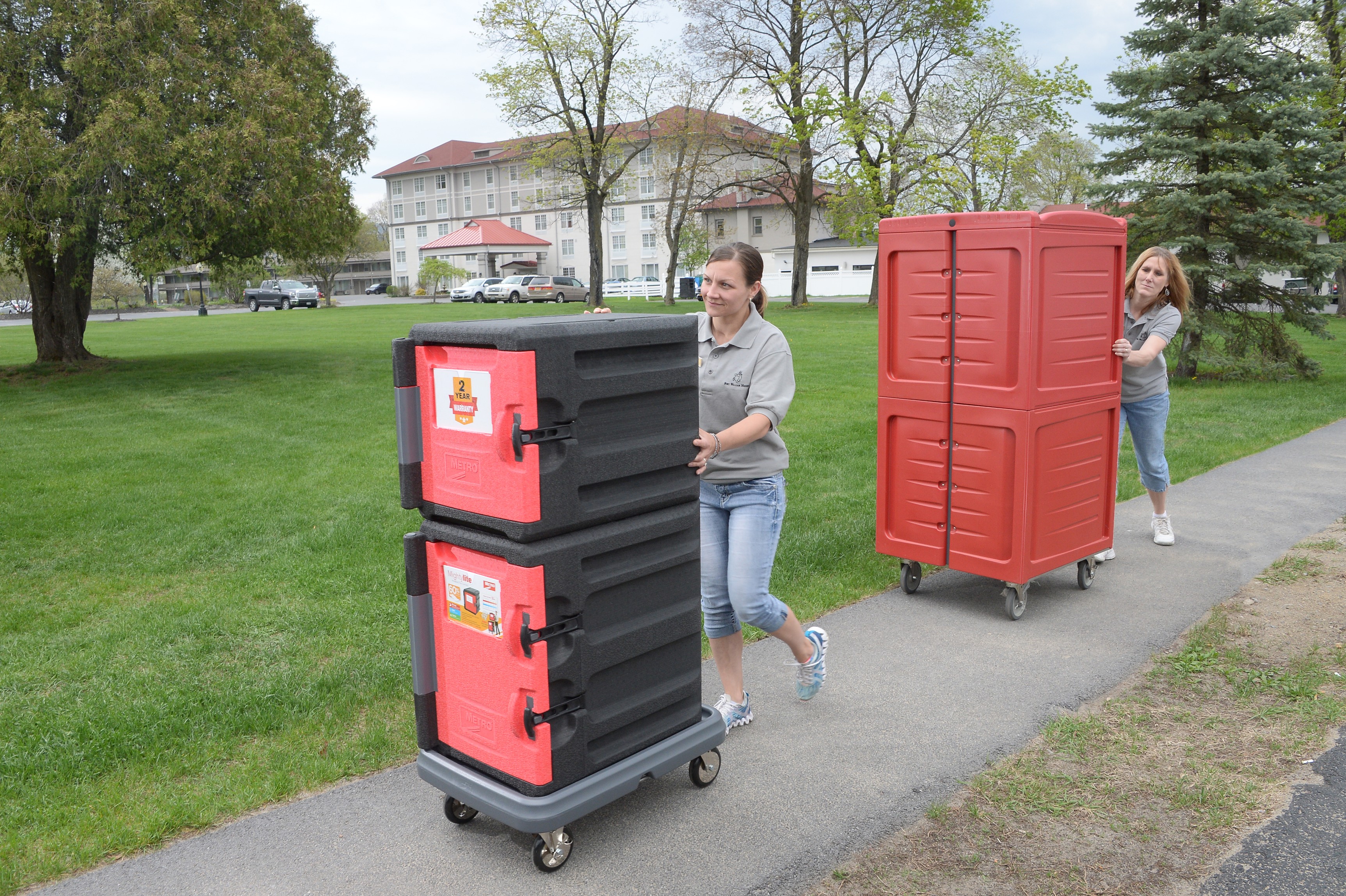
Keep Your Food Hot to Go with Metro
Maintaining food safety during transport doesn’t have to be complicated. By investing in the right equipment and following proven best practices, you can eliminate the risks of temperature fluctuations and ensure that your customers enjoy food that’s not only safe but also delicious.
When it comes to keeping food hot during transport, Metro offers some of the best solutions on the market. With a full range of insulated food carriers and transport cabinets, Metro products are built for durability, reliability, and ease of use.
Explore Metro’s full range of food holding and transport solutions to find the perfect fit for your operation.
